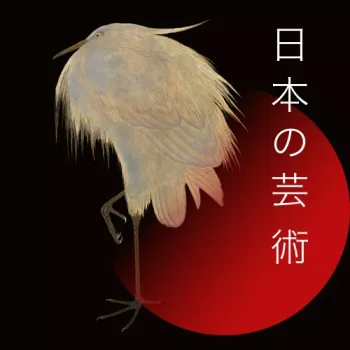Dagger (tantō) blade, c.1300; mount 1750-1850
Steel, lacquered wood, gold, silver, copper alloy, silk, ray skin | 4.0 cm (Width) x 3.0 cm (Depth); 37.5 cm (Length) (whole object) | RCIN 62626

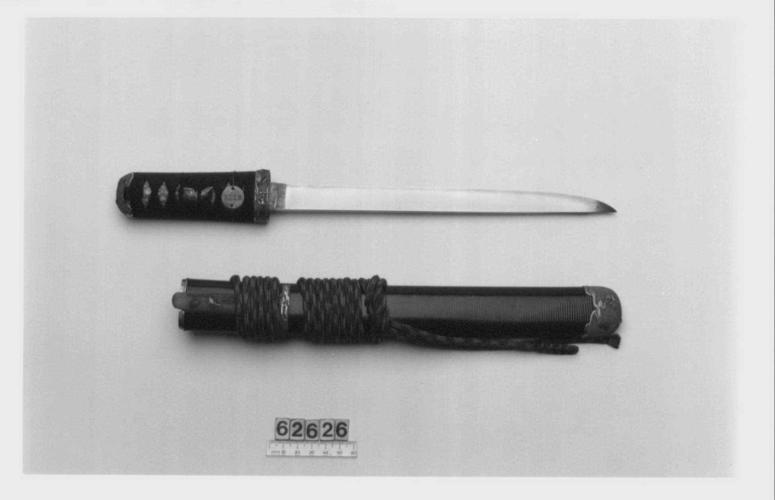
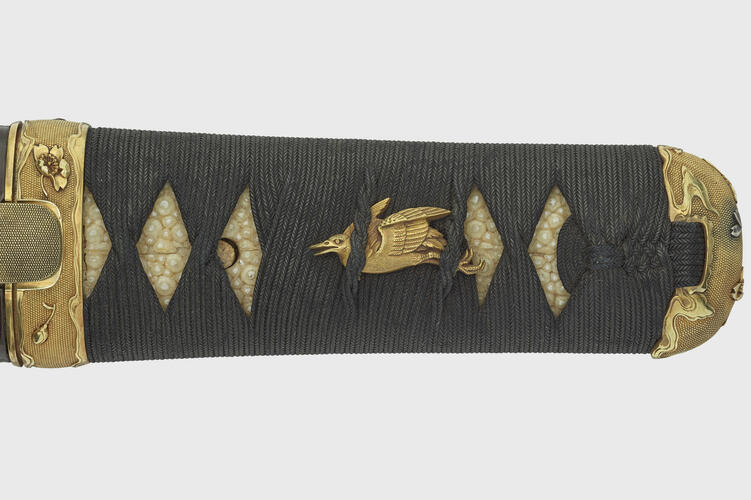
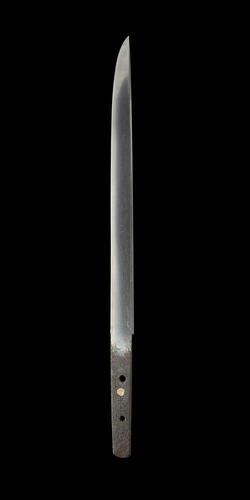
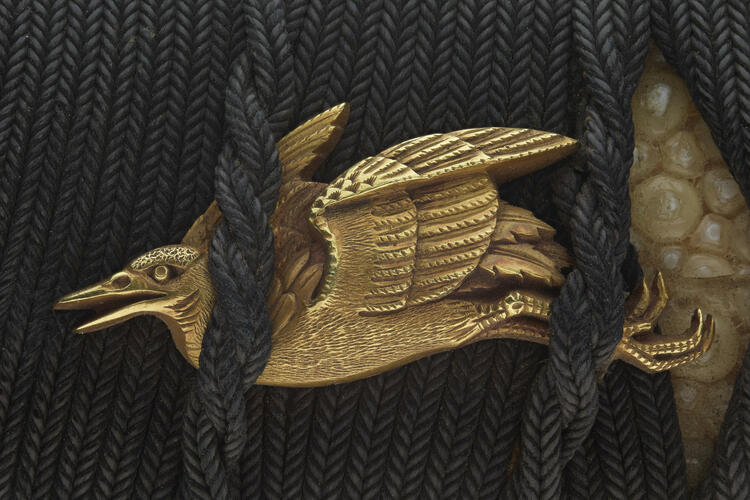


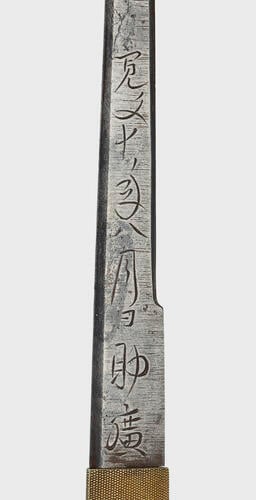
-
The simple yet elegant mounting of this dagger hides the fact that the blade is extremely early. The ray skin hilt is wrapped in black silk braiding with a small fitting (menuki) of gilt-copper alloy on each side in the form of a crane in flight. The pommel (kashira), collar (fuchi), silk cord fitting (kurikata) and chape (kojiri) are of gilt-copper alloy and silver with a decoration in relief of magnolia and cherry blossom on a nanako ground (a pattern of small dots thought to resemble fish roe). The side-knife (kogatana) is of similar alloy, but the decoration shows butterflies in relief. The fuchi is signed Issai Hōgen; hōgen is an honorific Buddhist title which here recognises Issai as a master of his craft. This is possibly Issai Tōmei, who worked in the late Edo period.
The elegant blade is signed Rai Kunitoshi and has three fixing holes in the tang, one plugged with gold. The Rai Yamashiro school of Kyoto swordsmiths was renowned for its high quality and effective blades. According to tradition, it was founded by a smith named Kuniyoshi, but there is much unresolved confusion as to his successors, all of whom used Rai and the first character Kuni in combination with a second character when signing blades. One smith simply used the two characters Kunitoshi, but there are also blades signed Rai Kunitoshi, giving rise to debate about whether they are the same person. Nonetheless, Rai Kunitoshi has long been considered one of the top three tantō makers of all time. Blades bearing his signature are considered to have achieved perfection and are the archetype used to describe late Kamakura-period daggers.
Text adapted from Japan: Courts and Culture (2020)Provenance
First recorded at Windsor Castle in the late nineteenth or early twentieth century
-
Creator(s)
(nationality) -
Medium and techniques
Steel, lacquered wood, gold, silver, copper alloy, silk, ray skin
Measurements
4.0 cm (Width) x 3.0 cm (Depth); 37.5 cm (Length) (whole object)
37.5 cm (length)
25.7 cm (blade length)
Category




